- Home
- Robert Graves
The Greek Myths Page 4
The Greek Myths Read online
Page 4
3
THE OLYMPIAN CREATION MYTH
AT the beginning of all things Mother Earth emerged from Chaos and bore her son Uranus as she slept. Gazing down fondly at her from the mountains, he showered fertile rain upon her secret clefts, and she bore grass, flowers, and trees, with the beasts and birds proper to each. This same rain made the rivers flow and filled the hollow places with water, so that lakes and seas came into being.
b. Her first children of semi-human form were the hundred-handed giants Briareus, Gyges, and Cottus. Next appeared the three wild, one-eyed Cyclopes, builders of gigantic walls and master-smiths, formerly of Thrace, afterwards of Crete and Lycia,1 whose sons Odysseus encountered in Sicily.2 Their names were Brontes, Steropes, and Arges, and their ghosts have dwelt in the caverns of the volcano Aetna since Apollo killed them in revenge for the death of Asclepius.
c. The Libyans, however, claim that Garamas was born before the Hundred-handed Ones and that, when he rose from the plain, he offered Mother Earth a sacrifice of the sweet acorn.3
1. Apollodorus: i. 1–2; Euripides: Chrysippus, quoted by Sextus Empiricus, p. 751; Lucretius: i. 250 and ii. 991 ff.
2. Homer: Odyssey ix. 106–566; Apollodorus: iii. 10. 4.
3. Apollonius Rhodius : iv. 1493 ff.; Pindar : Fragment 84, ed. Bergk.
1. This patriarchal myth of Uranus gained official acceptance under the Olympian religious system. Uranus, whose name came to mean ‘the sky’ seems to have won his position as First Father by being identified with the pastoral god Varuna, one of the Aryan male trinity; but his Greek name is a masculine form of Ur-ana (‘queen of the mountains’, ‘queen of summer’, ‘queen of the winds’, or ‘queen of wild oxen’) – the goddess in her orgiastic midsummer aspect. Uranus’s marriage to Mother Earth records an early Hellenic invasion of Northern Greece, which allowed Varuna’s people to claim that he had fathered the native tribes he found there, though acknowledging him to be Mother Earth’s son. An emendation to the myth, recorded by Apollodorus, is that Earth and Sky parted in deadly strife and were then reunited in love: this is mentioned by Euripides (Melanippe the Wise, fragment 484, ed. Nauck) and Apollonius Rhodius (Argonautica i. 494). The deadly strife must refer to the clash between the patriarchal and matriarchal principles which the Hellenic invasions caused. Gyges (‘earth-born’) has another form, gigas (‘giant’), and giants are associated in myth with the mountains of Northern Greece. Briareus (‘strong’) was also called Aegaeon (Iliad i. 403), and his people may therefore be the Libyo-Thracians, whose Goat-goddess Aegis (see 8. 1) gave her name to the Aegean Sea. Cottus was the eponymous (name-giving) ancestor of the Cottians who worshipped the orgiastic Cotytto, and spread her worship from Thrace throughout North-western Europe. These tribes are described as ‘hundred-handed’, perhaps because their priestesses were organized in colleges of fifty, like the Danaids and Nereids; perhaps because the men were organized in war-bands of one hundred, like the early Romans.
2. The Cyclopes seem to have been a guild of Early Helladic bronze-smiths. Cyclops means ‘ring-eyed’, and they are likely to have been tattooed with concentric rings on the forehead, in honour of the sun, the source of their furnace fires; the Thracians continued to tattoo themselves until Classical times (see 28. 2). Concentric circles are part of the mystery of smith-craft: in order to beat out bowls, helmets, or ritual masks, the smith would guide himself with such circles, described by compass around the centre of the flat disk on which he was working. The Cyclopes were one-eyed also in the sense that smiths often shade one eye with a patch against flying sparks. Later, their identity was forgotten, and the mythographers fancifully placed their ghosts in the caverns of Aetna, to explain the fire and smoke issuing from its crater (see 35. 1). A close cultural connexion existed between Thrace, Crete, and Lycia; the Cyclopes will have been at home in all these countries. Early Helladic culture also spread to Sicily; but it may well be (as Samuel Butler first suggested) that the Sicilian composition of the Odyssey explains the Cyclopes’ presence there (see 170. b). The names Brontes, Steropes, and Arges (‘thunder,’ ‘lightning’, and ‘brightness’) are late inventions.
3. Garamas is the eponymous ancestor of the Libyan Garamantians who occupied the Oasis of Djado, south of the Fezzan, and were conquered by the Roman General Balbus in 19 B.C. They are said to have been of Cushite-Berber stock, and in the second century A.D. were subdued by the matrilineal Lemta Berbers. Later they fused with the Negro aboriginals on the south bank of the Upper Niger, and adopted their language. They survive today in a single village under the name of Koromantse. Garamante is derived from the words gara, man, and te, meaning, ‘Gara’s state people’. Gara seems to be the Goddess Ker, or Q’re, or Car (see 82. 6 and 86. 2), who gave her name to the Carians, among other people, and was associated with apiculture. Esculent acorns, a staple food of the ancient world before the introduction of corn, grew in Libya; and the Garamantian settlement of Ammon was joined with the Northern Greek settlement of Dodona in a religions league which, according to Sir Flinders Petrie, may have originated as early as the third millennium B.C. Both places had an ancient oak-oracle (see 51. a). Herodotus describes the Garamantians as a peaceable but very powerful people, who cultivate the date-palm, grow corn, and herd cattle (iv.174 and 183).
4
TWO PHILOSOPHICAL CREATION MYTHS
SOME say that Darkness was first, and from Darkness sprang Chaos. From a union between Darkness and Chaos sprang Night, Day, Erebus, and the Air.
From a union between Night and Erebus sprang Doom, Old Age, Death, Murder, Continence, Sleep, Dreams, Discord, Misery, Vexation, Nemesis, Joy, Friendship, Pity, the Three Fates, and the Three Hesperides.
From a union between Air and Day sprang Mother Earth, Sky, and Sea.
From a union between Air and Mother Earth sprang Terror, Craft, Anger, Strife, Lies, Oaths, Vengeance, Intemperance, Altercation, Treaty, Oblivion, Fear, Pride, Battle; also Oceanus, Metis, and the other Titans, Tartarus, and the Three Erinnyes, or Furies.
From a union between Earth and Tartarus sprang the Giants.
b. From a union between the Sea and its Rivers sprang the Nereids. But, as yet, there were no mortal men until, with the consent of the goddess Athene, Prometheus, son of Iapetus, formed them in the likeness of gods. He used clay and water of Panopeus in Phocis, and Athene breathed life into them.1
c. Others say that the God of All Things – whoever he may have been, for some call him Nature – appearing suddenly in Chaos, separated earth from the heavens, the water from the earth, and the upper air from the lower. Having unravelled the elements, he set them in due order, as they are now found. He divided the earth into zones, some very hot, some very cold, others temperate; moulded it into plains and mountains; and clothed it with grass and trees. Above it he set the rolling firmament, spangling it with stars, and assigned stations to the four winds. He also peopled the waters with fish, the earth with beasts, and the sky with the sun, the moon, and the five planets. Lastly, he made man – who, alone of all beasts, raises his face to heaven and observes the sun, the moon, and the stars – unless it be indeed true that Prometheus, son of Iapetus, made man’s body from water and clay, and that his soul was supplied by certain wandering divine elements, which had survived from the First Creation.2
1. Hesiod: Theogony 211–32; Hyginus: Fabulae, Proem; Apollodorus: i. 7. 1; Lucian: Prometheus on Caucasus 13; Pausanias: x. 4. 3.
2. Ovid: Metamorphoses i–ii.
1. In Hesiod’s Theogony – on which the first of these philosophical myths is based –the list of abstractions is confused by the Nereids, the Titans and the Giants, whom he feels bound to include. Both the Three Fates and the Three Hesperides are the Triple Moon-goddess in her death aspect.
2. The second myth, found only in Ovid, was borrowed by the later Greeks from the Babylonian Gilgamesh epic, the introduction to which records the goddess Aruru’s particular creation of the first man, Eabini, from a piece of clay; but although Zeus had been the
Universal Lord for many centuries, the mythographers were forced to admit that the Creator of all things might possibly have been a Creatrix. The Jews, as inheritors of the ‘Pelasgian’, or Canaanitish, creation myth, had felt the same embarrassment; in the Genesis account, a female ‘Spirit of the Lord’ broods on the face of the waters, though she does not lay the world egg; and Eve, ‘the Mother of All Living’, is ordered to bruise the Serpent’s head, though he is not destined to go down to the Pit until the end of the world.
3. Similarly, in the Talmudic version of the Creation, the archangel Michael – Prometheus’s counterpart – forms Adam from dust at the order, not of the Mother of All Living, but of Jehovah. Jehovah then breathes life into him and gives him Eve who, like Pandora, brings mischief on mankind (see 39. j).
4. Greek philosophers distinguished Promethean man from the imperfect earth-born creation, part of which was destroyed by Zeus, and the rest washed away in the Deucalionian Flood (see 38. c). Much the same distinction is found in Genesis vi. 2–4 between the ‘sons of God’ and the ‘daughters of men’, whom they married.
5. The Gilgamesh tablets are late and equivocal; there the ‘Bright Mother of the Hollow’ is credited with having formed everything ‘Aruru’ is only one of this goddess’s many titles – and the principal theme is a revolt against her matriarchal order, described as one of utter confusion, by the gods of the new patriarchal order. Marduk, the Babylonian city-god, eventually defeats the goddess in the person of Tiamat the Sea-serpent; and it is then brazenly announced that he, not anyone else, created herbs, lands, rivers, beasts, birds, and mankind. This Marduk was an upstart godling whose claim to have defeated Tiamat and created the world had previously been made by the god Bel – Bel being a masculine form of Belili, the Sumerian Mother-goddess. The transition from matriarchy to patriarchy seems to have come about in Mesopotamia, as elsewhere, through the revolt of the Queen’s consort to whom she had deputed executive power by allowing him to adopt her name, robes, and sacred instruments (see 136. 4).
5
THE FIVE AGES OF MAN
SOME deny that Prometheus created men, or that any man sprang from a serpent’s teeth. They say that Earth bore them spontaneously, as the best of her fruits, especially in the soil of Attica,1 and that Alalcomeneus was the first man to appear, by Lake Copais in Boeotia, before even the Moon was. He acted as Zeus’s counsellor on the occasion of his quarrel with Hera, and as tutor to Athene while she was still a girl.2
b. These men were the so-called golden race, subjects of Cronus, who lived without cares or labour, eating only acorns, wild fruit, and honey that dripped from the trees, drinking the milk of sheep and goats, never growing old, dancing, and laughing much; death, to them, was no more terrible than sleep. They are all gone now, but their spirits survive as genii of happy music retreats, givers of good fortune, and upholders of justice.
c. Next came a silver race, eaters of bread, likewise divinely created. The men were utterly subject to their mothers and dared not disobey them, although they might live to be a hundred years old. They were quarrelsome and ignorant, and never sacrificed to the gods but, at least, did not make war on one another. Zeus destroyed them all.
d. Next came a brazen race, who fell like fruits from the ash-trees, and were armed with brazen weapons. They ate flesh as well as bread, and delighted in war, being insolent and pitiless men. Black Death has seized them all.
e. The fourth race of man was brazen too, but nobler and more generous, being begotten by the gods on mortal mothers. They fought gloriously in the siege of Thebes, the expedition of the Argonauts, and the Trojan War. These became heroes, and dwell in the Elysian Fields.
f. The fifth race is the present race of iron, unworthy descendants of the fourth. They are degenerate, cruel, unjust, malicious, libidinous, unfilial, treacherous.3
1. Plato: Menexenus 6–7.
2. Hippolytus: Refutation of All Heresies v. 6. 3; Eusebius: Preparation for the Gospel iii. 1. 3.
3. Hesiod: Works and Days 109–201, with scholiast.
1. Though the myth of the Golden Age derives eventually from a tradition of tribal subservience to the Bee-goddess, the savagery of her reign in pre-agricultural times had been forgotten by Hesiod’s day, and all that remained was an idealistic conviction that men had once lived in harmony together like bees (see 2. 2). Hesiod was a small farmer, and the hard life he lived made him morose and pessimistic. The myth of the silver race also records matriarchal conditions – such as those surviving in Classical times among the Picts, the Moesynoechians of the Black Sea (see 151. e), and some tribes in the Baleares, Galicia, and the Gulf of Sirté – under which men were still the despised sex, though agriculture had been introduced and wars were infrequent. Silver is the metal of the Moon-goddess. The third race were the earliest Hellenic invaders: Bronze Age herdsmen, who adopted the ash-tree cult of the Goddess and her son Poseidon (see 6. 4 and 57. 1). The fourth race were the warrior-kings of the Mycenaean Age. The fifth were the Dorians of the twelfth century B.C., who used iron weapons and destroyed the Mycenaean civilization.
Alalcomeneus (‘guardian’) is a fictitious character, a masculine form of Alalcomeneïs, Athene’s title (Iliad iv. 8) as the guardian of Boeotia. He serves the patriarchal dogma that no woman, even a goddess, can be wise without male instruction, and that the Moon-goddess and the Moon itself were late creations of Zeus.
6
THE CASTRATION OF URANUS
URANUS fathered the Titans upon Mother Earth, after he had thrown his rebellious sons, the Cyclopes, into Tartarus, a gloomy place in the Underworld, which lies as far distant from the earth as the earth does from the sky; it would take a falling anvil nine days to reach its bottom. In revenge, Mother Earth persuaded the Titans to attack their father; and they did so, led by Cronus, the youngest of the seven, whom she armed with a flint sickle. They surprised Uranus as he slept, and it was with the flint sickle that the merciless Cronus castrated him, grasping his genitals with the left hand (which has ever since been the hand of ill-omen) and afterwards throwing them, and the sickle too, into the sea by Cape Drepanum. But drops of blood flowing from the wound fell upon Mother Earth, and she bore the Three Erinnyes, furies who avenge crimes of parricide and perjury – by name Alecto, Tisiphone, and Megaera. The nymphs of the ash-tree, called the Meliae, also sprang from that blood.
b. The Titans then released the Cyclopes from Tartarus, and awarded the sovereignty of the earth to Cronus.
However, no sooner did Cronus find himself in supreme command than he confined the Cyclopes to Tartarus again together with the Hundred-handed Ones and, taking his sister Rhea to wife, ruled in Elis.1
1. Hesiod: Theogony 133–87 and 616–23; Apollodorus: i. 1. 4–5; Servius on Virgil’s Aeneid v. 801.
1. Hesiod, who records this myth, was a Cadmeian, and the Cadmeians came from Asia Minor (see 59. 5), probably on the collapse of the Hittite Empire, bringing with them the story of Uranus’s castration. It is known, however, that the myth was not of Hittite composition, since an earlier Hurrian (Horite) version has been discovered. Hesiod’s version may reflect an alliance between the various pre-Hellenic settlers in Southern and Central Greece, whose dominant tribes favoured the Titan cult, against the early Hellenic invaders from the north. Their war was successful, but they thereupon claimed suzerainty over the northern natives, whom they had freed. The castration of Uranus is not necessarily metaphorical if some of the victors had originated in East Africa where, to this day, Galla warriors carry a miniature sickle into battle to castrate their enemies; there are close affinities between East African religious rites and those of early Greece.
2. The later Greeks read ‘Cronus’ as Chronos, ‘Father Time’ with his relentless sickle. But he is pictured in the company of a crow, like Apollo, Asclepius, Saturn, and the early British god Bran; and cronos probably means ‘crow’, like the Latin cornix and the Greek corōne. The crow was an oracular bird, supposed to house the soul of a sacred king after his sacrifi
ce (see 25. 5 and 50. 1).
3. Here the three Erinnyes, or Furies, who sprang from the drops of Uranus’s blood, are the Triple-goddess herself; that is to say, during the king’s sacrifice, designed to fructify the cornfields and orchards, her priestesses will have worn menacing Gorgon masks to frighten away profane visitors. His genitals seem to have been thrown into the sea, to encourage fish to breed. The vengeful Erinnyes are understood by the mythographer as warning Zeus not to emasculate Cronus with the same sickle; but it was their original function to avenge injuries inflicted only on a mother, or a suppliant who claimed the protection of the Hearth-goddess (see 105. k, 107. d, and 113. a), not on a father.
4. The ash-nymphs are the Three Furies in more gracious mood: the sacred king was dedicated to the ash-tree, originally used in rain-making ceremonies (see 57. 1). In Scandinavia it became the tree of universal magic; the Three Norns, or Fates, dispensed justice under an ash which Odin, on claiming the fatherhood of mankind, made his magical steed. Women must have been the first rain-makers in Greece as in Libya.
5. Neolithic sickles of bone, toothed with flint or obsidian, seem to have continued in ritual use long after their supersession as agricultural instruments by sickles of bronze and iron.
6. The Hittites make Kumarbi (Cronus) bite off the genitals of the Sky-god Anu (Uranus), swallow some of the seed, and spit out the rest on Mount Kansura where it grows into a goddess; the God of Love thus conceived by him is cut from his side by Anu’s brother Ea. These two births have been combined by the Greeks into a tale of how Aphrodite rose from a sea impregnated by Uranus’s severed genitals (see 10. b). Kumarbi is subsequently delivered of another child drawn from his thigh – as Dionysus was reborn from Zeus (see 27. b) – who rides a storm-chariot drawn by a bull, and comes to Anu’s help. The ‘knife that separated the the earth from the sky’ occurs in the same story, as the weapon with which Kumarbi’s son, the earth-born giant Ullikummi, is destroyed (see 35. 4).

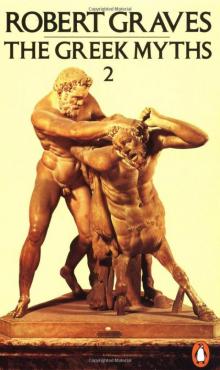 The Greek Myths, Volume2
The Greek Myths, Volume2 The Anger of Achilles: Homer's Iliad
The Anger of Achilles: Homer's Iliad Count Belisarius
Count Belisarius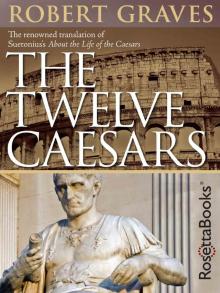 The Twelve Caesars
The Twelve Caesars Complete Poems 3 (Robert Graves Programme)
Complete Poems 3 (Robert Graves Programme) Homer's Daughter
Homer's Daughter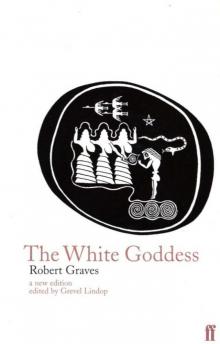 The White Goddess
The White Goddess Goodbye to All That
Goodbye to All That Claudius the God and His Wife Messalina
Claudius the God and His Wife Messalina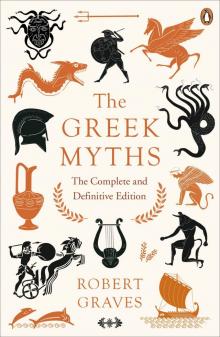 The Greek Myths
The Greek Myths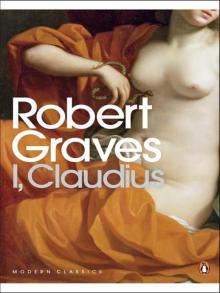 I, Claudius
I, Claudius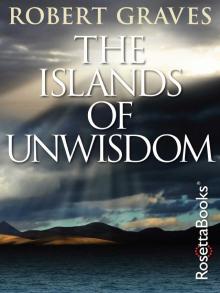 The Islands of Unwisdom
The Islands of Unwisdom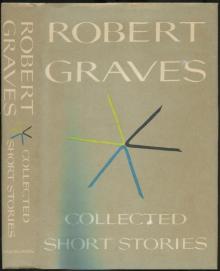 Complete Short Stories
Complete Short Stories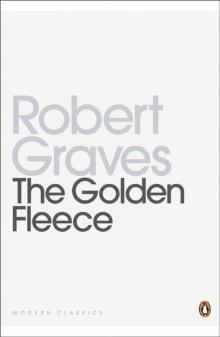 The Golden Fleece
The Golden Fleece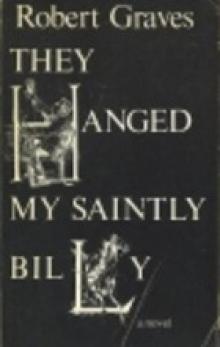 They Hanged My Saintly Billy
They Hanged My Saintly Billy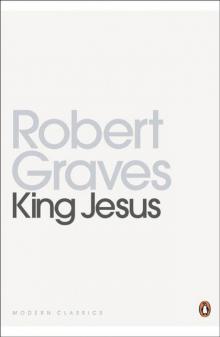 King Jesus
King Jesus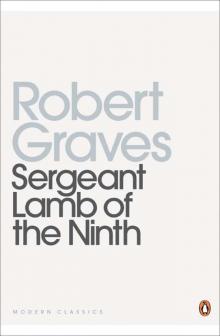 Sergeant Lamb's America
Sergeant Lamb's America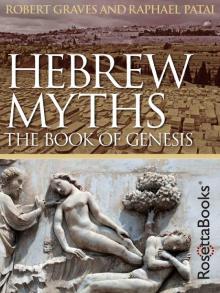 Hebrew Myths: The Book of Genesis
Hebrew Myths: The Book of Genesis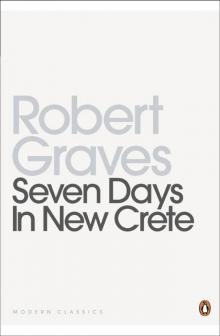 Seven Days in New Crete
Seven Days in New Crete Proceed, Sergeant Lamb
Proceed, Sergeant Lamb Claudius the God
Claudius the God Wife to Mr. Milton
Wife to Mr. Milton The Complete Poems
The Complete Poems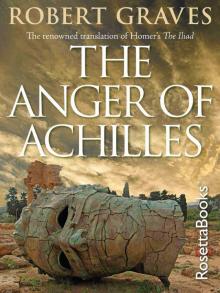 The Anger of Achilles
The Anger of Achilles Claudius the God c-2
Claudius the God c-2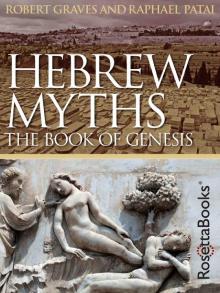 Hebrew Myths
Hebrew Myths I, Claudius c-1
I, Claudius c-1 The Greek Myths, Volume 1
The Greek Myths, Volume 1